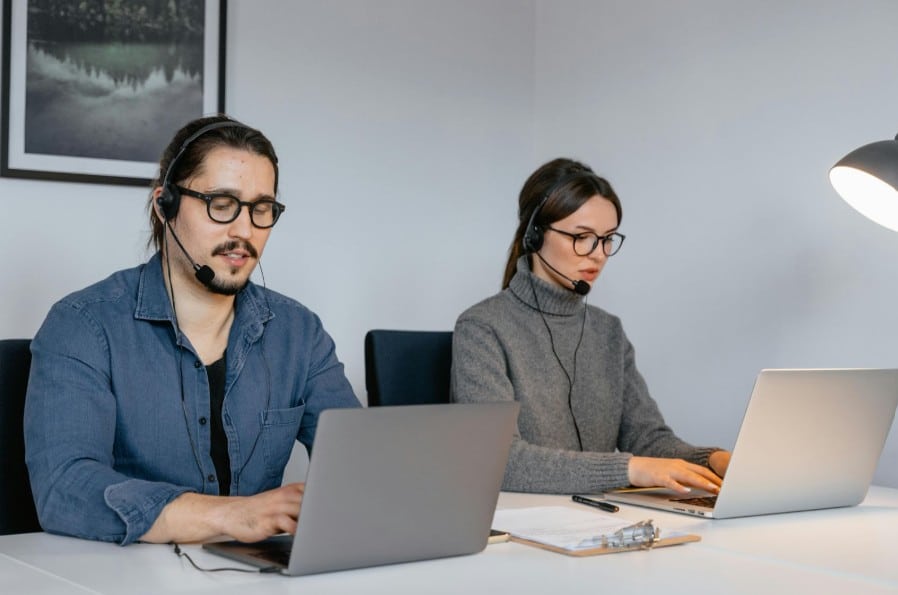From Camera Roll to Translation Desk: A Modern Approach to Document Handling
Document handling and processing used to be a manual task as all documents were in a hard, physical, paper format. Nowadays, that is no longer the case.
We create and use documents in soft form as it is more convenient to do so. You can easily create, edit, and share documents online as long as they are in soft form.
However, even though our society has evolved a lot, it still hasn’t become completely digital. Many offices, businesses, and government institutions still deal with physical documents. This can include things like tickets, ID forms, and even contracts or surveys that require signatures from other parties.
One other venue is, of course, translation services. Translation services rely heavily on digital documents as they are more convenient to work with.
That’s why modern document handling often involves a process of converting physical documents into digital ones. Let’s see how that entire process works and how modern technologies have made it convenient.
Document Capturing
The first step in modern document handling is document capturing. This refers to obtaining a document that needs to be digitized. You can do this easily with the help of the cameras on your smartphone.
Just take a clear snapshot, and you will have a digital image that you can process later. Other methods of capturing documents include:
- Scanning them
- Manually transcribing them
- Getting them in protected PDF form.
Of the three, the manual method is the least efficient, and other methods were developed so that it could be avoided.
Anyway, now that we have the document, we can start the processing.
Document Processing/Conversion
Document processing refers to using technologies like Optical Character Recognition (OCR) to extract data. You can do this in multiple ways, such as:
- Using an online OCR tool (a very user-friendly and simple method).
- Creating a program that does it (expert knowledge required).
- Using a SaaS platform that provides data extraction features.
Of the three, the first one is the most useful because it is the easiest and most accessible. For the second method, you would either have to pay a programmer to make such software or have the expert knowledge yourself to do it.
The last method is expensive because SaaS platforms always charge considerable subscription fees. So, it is wise to use the first method. Here are some steps to use it.
- Open a browser on your device.
- Type OCR online or image-to-text converter in the search bar.
- Hit search and then browse the SERPs.
- Depending on your region, the first ten results will contain some free tools.
- Open one and look for the input window. There, input your image or PDF by uploading it or copy-pasting it.
- You will find a button that says something similar to “Convert” or “Extract Text.” Press it, and you will get your text in DOC, DOCX, or TXT format.
That’s it. Simple, isn’t it? Which is why it is the best way to get started.
Translation and Localization
Once the document is in an editable format, it’s ready to be translated. This is where tools and human expertise work hand in hand.
If the document is in a language unfamiliar to you, you can use:
- Online translation tools for quick results (best for short, non-sensitive text).
- Professional translation services for official documents, legal papers, or anything that requires cultural nuance and linguistic accuracy.
This is where platforms like TranslateDay come in. They provide human experts than can verify the tone, accuracy, and correct terminology usage in any kind of document. These can include birth certificates, academic transcripts, medical records, or legal contracts.
This is useful because a lot of context can be lost in translation, which can be disastrous for legal, academic, and medical use cases. So, using a professional translation service is very useful.
Post-Translation Cleanup
After translation, the document may need a final round of formatting to improve its readability. This includes stuff like:
- Adjusting line breaks, headers, and spacing.
- Matching the format to the original document if required.
- Ensuring the translated version retains the structure and intent of the original.
Many translation services offer this as part of their deliverables. Thus ensuring the final document looks clean, professional, and ready to submit or print.
And all of this is possible due to OCR and converting physical or protected content into editable, digital documents.
Exporting and Sharing
Now that the document has been processed and translated, the final step is saving it in the desired format. Common export options include:
- PDF (ideal for printing or official sharing)
- Word (for editing or feedback)
- TXT (for basic storage or integration with other systems)
If you are editing it in a word processor like Microsoft Word, then you can easily save the document in any of the above formats. All you have to do is click “Save As” and then, in the file type, select your preferred format.
Once saved, the document can be emailed, uploaded, archived, printed, or otherwise shared as needed.
And that’s how modern document handling is done, with a mix of both human and machine assistance.
Final Thoughts
The process of handling documents has come a long way. What once required a typewriter, a scanner, and multiple rounds of manual proofreading can now be done with a smartphone and a few smart tools.
From taking a photo of a document to converting it into text, translating it, and formatting it for official use, modern workflows have made everything more efficient, accurate, and accessible. So, embrace them and improve your own document flows.


